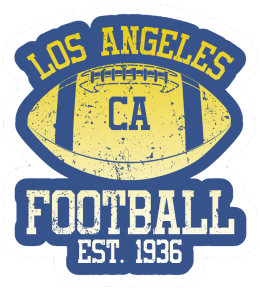- Joined
- Jun 28, 2010
- Messages
- 49,212
- Name
- Burger man

http://espn.go.com/blog/nflnation/post/_/id/207301/what-data-chips-in-footballs-can-and-cant-do
The NFL plans to place data chips in all game footballs during the 2016 preseason, and likely for Thursday night regular-season games as well. To answer your first question: No, it does not appear the chips will be used to measure pounds per square inch inflation levels. (Although they could.)
So exactly what data will the chips provide? Neither the NFL nor the company involved with its NextGen stats program is ready to address it publicly. But after speaking to people with close ties to the industry, I can offer up a number of likely benefits. Some could help the NFL administrate games more efficiently, many will be targeted as television content and a few hoped-for by-products appear unreachable at the moment.
Here they are, in a snappy Q&A format:
Wait, why can't this measure psi?
As I noted Monday night on checking psi, the NFL's chips won't be equipped with that capability. The chip itself is a 3-gram piece of technology inserted inside the football, underneath the laces, designed to avoid any change in the ball's weight or difference in its action while in the air.
It's important to note that the chip could be modified at any point to measure psi, if the NFL decides it wants to. (There are no indications it does.) The necessary addition is the same technology that warns automobile drivers about low air pressure in their tires.
But it should measure everything the ball does, right?
Correct. The NFL will receive real-time readings of the ball's precise location, speed and trajectory. When triangulated with the RFID (radio frequency identification) chips inserted in players' shoulder pads, it can provide relative distance as well. You might be interested, for example, in exactly how many feet Robert Griffin III throws the ball over his receiver.
The information will be collected the same way it is from players and officials. In 2015, each NFL stadium was wired to collect the RFID signals and process them in real time. Some of the player data has been distributed to broadcast networks for in-game use, but the NFL warehoused most of it. In May, the league agreed to begin distributing the data to teams. There has been no formal announcement about how the league will handle data collected to footballs.
No, but really: psi!
Sorry. Not yet. But
If the chips reveal precisely where the ball is ...
Yes. The chips could help the NFL enforce its chain of custody policies for footballs during pregame, halftime and the game itself.
Can the chips help with ball placement?
In some cases. The NFL should know, for example, the precise spot a punt goes out of bounds. One day, the league might not need to rely on an official running up the sideline and making his best educated guess on where a sky-high ball might have crossed that line.
The chips can also tell how close the ball comes to the uprights on field goals and extra points, an important part of any future discussion to narrow the goal posts.
Wait, what about first downs and the goal line?
That would be a bit more complicated, from what I understand.
Yes, the NFL will know whether a ball reaches the first-down marker or if it breaks the plane of the goal line. But unless it adds chips to the players' knees, elbows and feet, it won't know where the ball was at the moment the player was down -- the location the ball should be marked. At the moment, chips are inserted only into a player's shoulder pads.
By itself, then, a chip inside a football can't determine where a ball should be marked down. What it could do, however, is provide assistance during a replay review. If a player leaps over a pile at the goal line, the chip could tell us if the ball crossed the plane before he was pushed back. Or if a replay determines a player was not down while pushing a pile, officials could then use ball location technology to determine if it reached the line to gain.
What sort of television content were you talking about?
Much of it would relate to quarterbacks and the passing game. Viewers could see how fast a quarterback's passes are, what trajectory he might have employed on a touch throw and even how fast it is spinning. (Or not spinning, as it were. Too bad Peyton Manning has retired.)
Accuracy evaluations could get a newly objective measure as well. The chip can provide information on exactly how close a quarterback delivered the ball to his receiver, and perhaps away from a defender -- or vice versa. Or: How close was each defender to the ball when the receiver caught it?
Any updates on psi?
Nope. Nothing new.
The NFL plans to place data chips in all game footballs during the 2016 preseason, and likely for Thursday night regular-season games as well. To answer your first question: No, it does not appear the chips will be used to measure pounds per square inch inflation levels. (Although they could.)
So exactly what data will the chips provide? Neither the NFL nor the company involved with its NextGen stats program is ready to address it publicly. But after speaking to people with close ties to the industry, I can offer up a number of likely benefits. Some could help the NFL administrate games more efficiently, many will be targeted as television content and a few hoped-for by-products appear unreachable at the moment.
Here they are, in a snappy Q&A format:
Wait, why can't this measure psi?
As I noted Monday night on checking psi, the NFL's chips won't be equipped with that capability. The chip itself is a 3-gram piece of technology inserted inside the football, underneath the laces, designed to avoid any change in the ball's weight or difference in its action while in the air.
It's important to note that the chip could be modified at any point to measure psi, if the NFL decides it wants to. (There are no indications it does.) The necessary addition is the same technology that warns automobile drivers about low air pressure in their tires.
But it should measure everything the ball does, right?
Correct. The NFL will receive real-time readings of the ball's precise location, speed and trajectory. When triangulated with the RFID (radio frequency identification) chips inserted in players' shoulder pads, it can provide relative distance as well. You might be interested, for example, in exactly how many feet Robert Griffin III throws the ball over his receiver.
The information will be collected the same way it is from players and officials. In 2015, each NFL stadium was wired to collect the RFID signals and process them in real time. Some of the player data has been distributed to broadcast networks for in-game use, but the NFL warehoused most of it. In May, the league agreed to begin distributing the data to teams. There has been no formal announcement about how the league will handle data collected to footballs.
No, but really: psi!
Sorry. Not yet. But
If the chips reveal precisely where the ball is ...
Yes. The chips could help the NFL enforce its chain of custody policies for footballs during pregame, halftime and the game itself.
Can the chips help with ball placement?
In some cases. The NFL should know, for example, the precise spot a punt goes out of bounds. One day, the league might not need to rely on an official running up the sideline and making his best educated guess on where a sky-high ball might have crossed that line.
The chips can also tell how close the ball comes to the uprights on field goals and extra points, an important part of any future discussion to narrow the goal posts.
Wait, what about first downs and the goal line?
That would be a bit more complicated, from what I understand.
Yes, the NFL will know whether a ball reaches the first-down marker or if it breaks the plane of the goal line. But unless it adds chips to the players' knees, elbows and feet, it won't know where the ball was at the moment the player was down -- the location the ball should be marked. At the moment, chips are inserted only into a player's shoulder pads.
By itself, then, a chip inside a football can't determine where a ball should be marked down. What it could do, however, is provide assistance during a replay review. If a player leaps over a pile at the goal line, the chip could tell us if the ball crossed the plane before he was pushed back. Or if a replay determines a player was not down while pushing a pile, officials could then use ball location technology to determine if it reached the line to gain.
What sort of television content were you talking about?
Much of it would relate to quarterbacks and the passing game. Viewers could see how fast a quarterback's passes are, what trajectory he might have employed on a touch throw and even how fast it is spinning. (Or not spinning, as it were. Too bad Peyton Manning has retired.)
Accuracy evaluations could get a newly objective measure as well. The chip can provide information on exactly how close a quarterback delivered the ball to his receiver, and perhaps away from a defender -- or vice versa. Or: How close was each defender to the ball when the receiver caught it?
Any updates on psi?
Nope. Nothing new.

